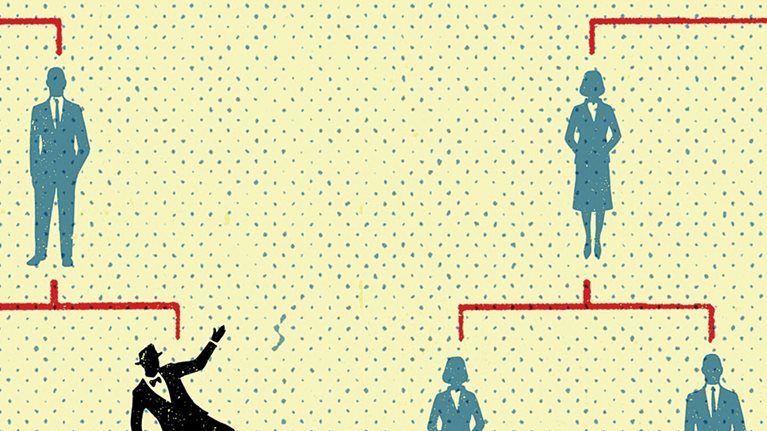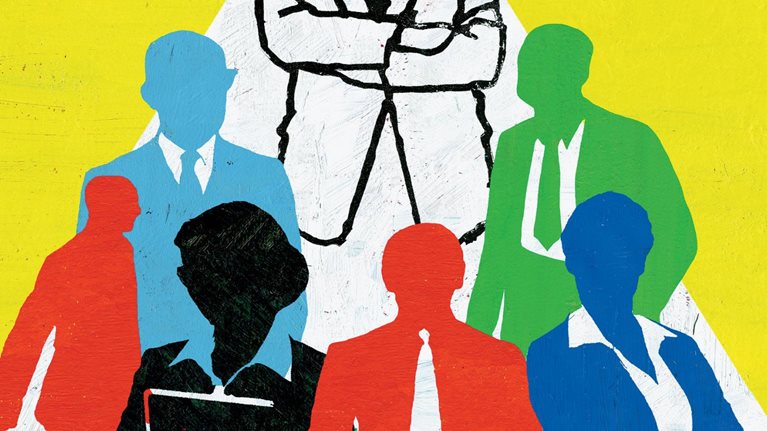In this edition of Author Talks, McKinsey Global Publishing’s Tom Fleming talks with Tiziana Casciaro, professor of organizational behavior at Toronto’s Rotman School of Management. Casciaro is the coauthor (with Julie Battilana of Harvard Business School and Harvard Kennedy School) of Power, for All: How It Really Works and Why It’s Everyone’s Business (Simon & Schuster, August 2021). Casciaro identifies common misconceptions about power and argues for new organizational safeguards to minimize the damage done by self-focused, hubristic leaders—many of whom don’t recognize they have a problem at all. An edited version of the conversation follows.
What problem were you trying to solve with this book?
What prompted me to coauthor this book is realizing how deeply held people’s misconceptions of power are. I’m always stunned to see how many people equate power with position and assume that power belongs to the people higher up: the directors, the CEOs, the bosses. They fail to realize that power can be much more distributed; it can reside in the nooks and pockets of an organization that have little to do with rank.
We tend to personalize power and think, “Power is something that I have as a trait. I have certain characteristics that make me a powerful person.” But in reality, power is always relative. It depends on what the other individual in that relationship wants and whether you can provide it. That’s where power really takes shape. It’s not something that we own.
These misconceptions are deep—including that power is essentially a matter of manipulation and coercion. It’s a very Machiavellian view that misses the point that power is energy. It’s energy to change the world around you, to take action, to shift people’s behaviors. Power can be used for good or ill but is always in action. It’s always there. In writing this, Julie and I wanted to reshape how people see power so that they can embrace it in their own lives.
What surprised you most in the process of writing and researching the book?
Writing and researching the book has made me a lot more sensitive to recognizing how interdependent we all are. I think that a lot of the bad that happens around power comes from the illusion it gives us that we are capable of doing things on our own, that we don’t need anyone, that we can just forge ahead, irrespective of other people.
So for me, what has changed is that I’ve become more sensitive to my impact on other people. It’s so tangible in this pandemic. We can’t withdraw from each other; we have to keep a sense of responsibility toward each other alive and well. And I hope that reading this book will make readers kinder too. To paraphrase Martin Luther King, we are all connected in this garment of destiny. And we can do better if we recognize that.
You write in the book that power affects us in similar ways. How do we experience power?
Power has very predictable and recognizable effects on our psyche. It’s kind of stunning how easy they are to spot. On the good side, power makes us feel in control and therefore capable of taking an action, taking a risk. And that’s obviously essential because without a sense that we can actually interact with our environment and act on it and have an impact, we do nothing. Feeling powerless is paralyzing.
On the bad side, there are two effects that power has on us when we finally experience it. The first is to make us overconfident, which can lead to a hubristic sense of invincibility that we manifest in all kinds of different environments. In the business world, there have been studies of CEOs succumbing to hubris. A lovely study I really like showed that CEOs who have been in the news, have received a lot of praise in the media, and get a lot of attention end up paying huge premiums in their acquisitions. They think that they can fix that company they have just acquired because, of course, they are so cool. Investors might not be particularly happy.
The second negative effect of power is self-focus. We can become uninterested in others—especially if the other person is lower down in the power hierarchy—because, fundamentally, we don’t think we need them. And so we’re not particularly curious about them, and, certainly, we’re not very sensitive to their needs and wants.
These two issues are massive because it undermines our effectiveness as leaders when we don’t understand the people we’re leading. If we are convinced we’re the best and we don’t need any input, we don’t get any input. And when we don’t get any input, our decisions are not as good as they could be.
What’s the antidote? What can leaders do to avoid these problems?
It may sound a little trite, but you fight hubris with humility, and you fight self-focus with empathy. There are many things that an organization can do to help leaders maintain focus on the limitations of their knowledge and capabilities—humility—as well as to remind leaders that they need others to do great work, which is where empathy comes in. Empathy is based on recognizing our interdependence on one another.
On the humility side, I have encountered leaders who surround themselves with people who speak truth to power. Some call a council of folks who are high-level enough and know the leader closely enough that they’re not afraid to speak. Too often, leaders are entirely unaware of how impossible they make it for people to tell them something that they’ve done wrong. If you are a leader and you do not have a council of this sort that you have created—make it happen.
Too often, leaders are entirely unaware of how impossible they make it for people to tell them something that they’ve done wrong.
The other idea I really like is for an organization to measure humility, to ask people to evaluate leaders—or anybody, really—not only on their competence, performance, or all of the wonderful things that we already measure but also on a measure of how humble they are. And there are evaluation sets in the research that do just that, with questions such as “This person takes note of others’ strengths,” or “This person shows appreciation for the contributions of others,” or “This person acknowledges when others have more knowledge or skills.” Imagine that.
And then, on the empathy side, there are many companies that do a good job of educating leaders about the fact that they are not in stand-alone roles. They need other people. And the way to do that is to steep ourselves in the experience of others. Consider a company that hires somebody for a managerial role, but the first thing it makes that person do is work in a call center. There’s a depth of empathy that comes through such experience that is irreplaceable. It makes a boss or a manager a lot more sensitive to the condition of people who are lower down in the organizational hierarchy. Here, too, there are assessments that organizations can put in place. Instead of having the usual performance ratings, for example, add a couple of critical questions: “How have you benefited from the effort and contributions of others?” “How have you helped others succeed?”
I love structures that allow leaders to be reminded that they’re not fabulous all the time, that they have limitations, that they need other people.
Let’s switch gears and talk about the way power operates. What do we need to know about power to make constructive use of it?
Power comes from control over valued resources. You have power if you have something that the other person or group needs or wants and if they have few alternatives to you to get it, such that you control their access to that valued resource. So in any power relationship, you want to ask: “What is it that people want?” Because if you understand that, you are well equipped to try to deliver it. And “Who controls access to it?” Because if you figure that out, you can create some dependency so that people need you to get a desired resource.
Every power relationship, no matter with whom or in what context, can be read and understood based on the four elements that result: Do you have what the other party wants? How many alternatives to you do they have to get it? But you’re not done. Because whether you have power over them is conditional on whether they have power over you. So you also need to know: Do they have something that you want? Do you have alternatives to them for getting it?
These four elements are always playing with each other in a power relationship, and they give us four strategies to rebalance power with somebody: get them interested in the resources you’ve got, become less substitutable as a source of those things, make yourself less interested in what they’ve got, and increase the number of your alternatives to get what they’ve got.
These are the four elements of power, and by taking them one at a time and seeing where you have room for action, you can improve your situation dramatically. What makes it complicated is that we are embedded in multiple power relationships, of course, but once you understand the basic elements, you can do a lot. There’s more room for action than we assume sometimes.
How does this look in practice?
There’s a story I like that exemplifies this. It’s about an HR executive in an investment bank on Wall Street during the global financial crisis. Things had collapsed, and the stock price of this bank had gone down 85 percent. It wasn’t clear that the doors would open the following day. And this HR managing director finds herself in a cost center in a place that is bleeding money, and all of her team is being fired. She knows that she is next.
You might be thinking: This is a very, very power-disadvantaged situation. She seems to have nothing to offer to make herself attractive. But this executive was quite brilliant because she didn’t succumb. She thought: What can I give to this company that is so valued that they will keep me?
She understood that in this new reality, everything would change in the bank. Finance, risk, all of it. It would require new executive talent. And that was what she could do. She could secure the right external talent and acculturate them to the very strong norms of the firm—a long process. And she could retain the few people who were already in the firm and had the right capabilities but were being poached by others.
So she came up with a wonderful plan with her boss. Together they went to the CEO and said, “Listen, this is what you need. You need this new kind of talent.” She described the massive program of acculturation and training they needed to create the capabilities that could attract clients and create new business.
The CEO approved the plan, even though it was expensive, and not only did she keep her job, she became a fundamental asset for the firm. This is what you can do when you understand power—identify what’s valued in a situation and create a plan to deliver it. It requires study, intelligence, creativity. And determination—this executive was very determined. But she understood the two questions: What do they value? Who controls access to it? And she used them to create room for action when it appeared there was none at all.



